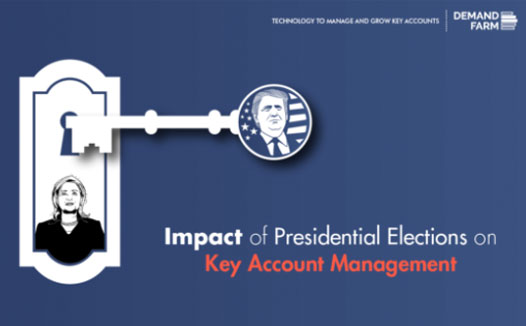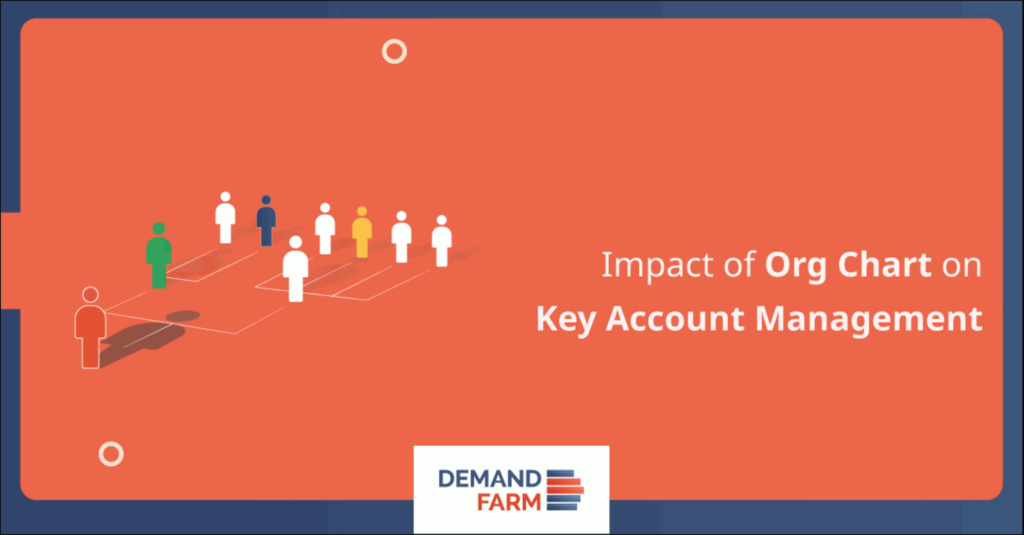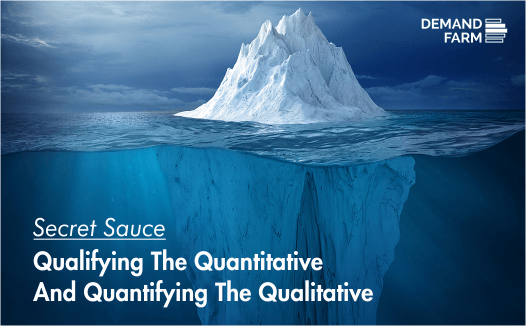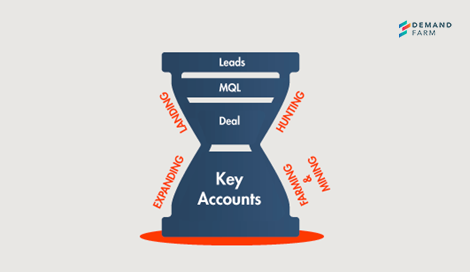Do you know the Importance of Key Account Management Software?
Are your key accounts dear to you? I understand. For most b2b, key accounts contribute the majority of revenue. Thus, their success is dependent on how they keep and grow these key accounts. B2B leaders would leverage a Key Account Management Software to enable this imperative. Which brings us to the question, how does software help grow key accounts? Account Intelligence Where should an account manager go for account intelligence? A company’s financial information and growth details, Key Employees with their titles/ social profile/ function/ contact detail, Top management changes, organization structure, Important announcements or news and other business initiatives? The account planning tool provides all the above account intelligence in a matter of clicks. Account Understanding The software also helps the Account Manager: To understand the level of relationship with the account – Strategic or Tactical or in between (cooperative/interdependent). To understand the attractiveness of the account through parameters like future growth, type of long-term contracts, and level of relationship mappings. Conduct competitor analysis of the account. Thus, helping the Key Account Managers build the account landscape to map the products/services to buying centers. In turn, identifying ‘White spaces‘ of growth. Account Planning The software makes annual key account planning easier by providing all the data for planning and providing ready-made templates to complete their plan. The plan will include strategy, activity planning, and revenue goal setting. A good Key Account Management software also helps the Account Manager to present and track the plans anytime anywhere. Account Collaboration Key Account Management software provides a perfect platform for various internal stakeholders often globally spread to collaborate on planning, activities, and analysis of the key accounts. The software also serves as a single source of truth for all account-related data. Analytics Key Account Management software provides the Account Manager with analytics and dashboards to make the right decisions and take the right actions. Some of the key metrics it provides are, Revenue target vs achievement, Account growth, farming and mining effectiveness, Pipeline, For the executive leadership, the software provides powerful analytics using aggregated data of all key accounts. It helps answer – what do all the account plans together indicate, which product/solution you won/lost industry-wise, and much such analytics to enable effective decision making. Productivity Account manager runs the risk of doing many repetitive tasks that are non-revenue bearing. Automating repetitive tasks improves the productivity of Account Managers. Some examples are creating the account plans, presenting the plan directly from the software, exporting account info pdf, preparing for QBRs, tracking activities and financials, generating reports, notifications, and reminders, ease of creation, and consumption of data across devices. Platform The importance of Key Account Management software is that it is a single platform for account managers to create and consume data. It provides account intelligence, account financials, opportunities, contacts, account plans, account engagements, and dashboards in a single platform. The platforms provide a single source of truth and save the account manager the hassle of logging in to various enterprise applications for accessing data. All in all, Key Account Management software enables account growth through deeper analysis, better planning, and reliable governance. In the future, this will get even more powerful with artificial intelligence and machine learning technologies. A Good Key Account Management Software A good key account management software helps analyze, plan and govern the strategic accounts of a b2b company. It is used to build account landscape and organization charts easily using CRM data. It helps analyze key accounts – both qualitative and rule-based. It also provides account intelligence through external web sources. The creation of a strategic account plan is integral to such software. It has productivity tools like presentation, export, plan trackers, and in-app training/adoption. The executive leadership should use key account management software to analyze aggregated data of multiple accounts to make the right decisions. Organizations that base their revenue growth on key accounts are guided by a key account management software that prompts insights to expand key accounts.
Triaging Key Account Management

Triaging. The Free Dictionary explains Triage as, “A system used to allocate a scarce commodity (food / medicine), only to those capable of deriving the greatest benefit from it. Triage is used in hospital emergency rooms, on battlefields, and at disaster sites when limited medical resources must be allocated” I will excuse you if you thought we were going anywhere near the above situations. That isn’t the case. The focus remains Key account management (KAM). Triaging is useful in addressing the ambiguity associated with Key Account Management’s critical first step i.e. selecting key accounts. Identifying Key Accounts Successful strategic account management requires a strong start. Identifying key accounts is one of the first critical steps. There are several ways to approach this of course. A good starting point would be to locate the stage of Key Account Management the organization is at. Is it an advanced practitioner of KAM/ Just getting started? Somewhere in the middle? Here are some more considerations Offer – Wouldn’t you differentiate key accounts from the rest of your customers? Lifetime Value – Key accounts should not only show revenue potential but also margin expansion. The existing current contribution will also be key. Service complexity – Key accounts have custom requirements that warrant varying degrees of service. Defining a key account, is well, key. Often, it isn’t clear and leads to ambiguity. Ambiguity Determining shortlisting criteria for selecting key accounts isn’t straightforward. Some factors are black and white, making for clear decision-making. Given the inherent complexity in key accounts, ‘grey’ is what will confront decision-makers, often. They would be lucky to get away with less than 50 shades of ‘grey’. To deal with this, university researchers in the strategic account management space were quick to start a ‘Science’ vs ‘Art’ debate. While the debate continues, triaging could help cut through some of the ambiguity. Triaging Prioritizing key accounts is necessary, but not sufficient. Triage is vital. During natural disasters and medical emergencies, teams have to decide – who really needs help, who doesn’t need it at all and who can wait. That also means the very difficult decision of deciding to give up on those who can’t make it. True, it does not entirely solve the ambiguity problem in selecting key accounts. But, it does move the needle forward in sticky situations. Approaching Triage DemandFarm proposes a ‘triage framework’ for key account teams who are still deciding which accounts to include as part of their key account management strategy. The framework is not recommended to decide on existing key accounts. ‘Demoting’ key accounts is a sticky subject and beyond the scope of this article. Key account teams would appreciate how easy it is to include companies as key accounts compared to managing and growing them – or worse, ‘demoting’ them. The DemandFarm ‘triage framework’ is best suited to helping KAM teams answer the following question.“ Who should not be a key account?” It is one way of approaching the meaningful identification of the most valuable accounts Table heading – Triage Framework (sumender to make an image of the below table) Broadly, there are 4 factors categorized as external and internal. The above table is a suggested triage framework that will guide organizations in answering the question, “Who should not be a key account?”. External Factors External are those factors that are dependent on the business environment and market conditions. These are as under. Market Position – Rate your account on the basis of its current market position and its future potential. Is the market growing? Is the company account growing its market share? Is the account lagging competition? Innovation Orientation – How is the account responding to innovation? According to the theory of ‘Diffusion of Innovations’, where does the account fit? Are they innovators, early adopters or laggards? Are they ahead of the curve or prefer to follow? Internal Factors Internal factors are those that are deemed to be under your control when dealing with the account. Strategy Influence – Do we have enough control to influence the current and future business strategy of the account? Will they take and value your opinion for key business decisions? Would we be a vendor or a strategic partner to the account? Operational Complexity – Will the account management be transaction-intensive? How easy is it to get approvals? What organization do we need to develop to deliver on the scope? What is the intensity of the existing relationship mapping with stakeholders and their colleagues? Do we see opportunities for margin expansion? Scoring the Framework The triage framework also contains scores and weights for scientific decision-making. The following scale is suggested. Score from 1 to 10 (1 – least favorable; 10 – most favorable) Weights or Percentage should not exceed 100% for all the 4 factors combined It is pointed out again that this score is only to help identify a “non-key account”. It is suggested that organizations pursuing key account management, should clearly define a threshold score below which an account would be rendered as a “non-key account”. At the same time, a score above the threshold will not necessarily make an account ‘key’. Finally, this is just a starting point – getting into the exercise, one will find several relevant variables to add to the grid. Will a key account management software help? Thanks to big data engine and predictive analytics tools, the white space opportunity exists to make the ‘selection’ and ‘triage’ steps, a bit scientific. Automatically capturing quality data and developing scoring mechanisms (similar to the above framework) to identify key accounts could make key account management methodical and predictable. Have we arrived there, yet? You could try triage to answer that question. If you liked the blog, you can also read an Interview with Adrian Davis, President- Whitestone Inc.
Impact of Presidential Elections on Key Account Management Strategy

Who do you think would be the next President of the United States? Any change that happens in the US economy substantially affects the world economy. In the past, the US economy and markets have responded well to the elections when the results have been predictable. However, this time things have been very unpredictable. The Times has called it “the most surreal Presidential campaign in modern times.” The very fact that Mr. Obama is not running again for President is a very crucial factor. If you are a senior executive running the P&L of an Enterprise IT (Information Technology) outsourcing company, I can imagine your nervousness. Over the years, while successfully helping numerous enterprise companies enhance their sales effectiveness through DemandFarm, we have realized that Key Account Management is highly useful for Enterprise IT outsourcing companies. This is because great relationships between the enterprise consumer and IT service provider are what get them more and repeatable business. These Key Accounts (or set of enterprise consumers) for these IT services companies correspond to key sectors such as Automotive, Healthcare, Pharmaceuticals, Infrastructure, Technology, etc. Each of these sectors might experience a boom or slack due to the government’s tax policies, economic reforms, etc. Let us take a few examples to explain this. The Democrats and Hillary Clinton have been quite keen on health care reforms. If Ms. Clinton comes to power, analysts anticipate the further development of ‘Obamacare’. This can be a boon for life sciences companies and healthcare organizations such as managed care facilities, hospitals, insurance providers, and medical technology companies. If one or more of your Key Accounts happens to fall into these categories, you might want Ms. Clinton to win. Now few sectors might not do as well under Democratic rule. Take pharmaceuticals for example. The Clintons have fought to lower pharmaceutical prices for a long time. During his time as President, Bill Clinton took a pledge to stop drug companies from price gouging and his administration took measures to stop that. Hillary Clinton’s campaign announced in September that they plan to “hold the pharmaceutical industry accountable and rein in drug costs.” If we look at the other side of the picture now, if Republicans come to power oil and natural companies may benefit. Mr. Trump is quite serious about oil’s significance to the American economy and wants the country to be energy independent. Trump administration could increase new pipeline construction and drilling, which might result in increased supply and low oil costs. This could also result in more business for oil equipment manufacturers. There is a possibility that Trump may lift the current ban on U.S. oil exports. While things may seem good for oil and natural gas companies, clean energy companies could face setbacks because of the obvious reasons. If you are a senior executive running the P&L of an Enterprise IT outsourcing company, thoughts about which other sectors not mentioned here might perform well or suffer would be crossing your mind. What will happen to my Key Account that falls into Pharmaceuticals or Renewable energy sectors? Should I be asking my CEO to lower the targets for my team for this FY in the next meeting? And finally, who is leading the election race right now? To be honest, five days before the final election result, not even the best analysts can answer these questions with 100% confidence. Also, even after the results are announced you will have to wait for few months to see what policies the new president and government are following. However, one thing is clear – your Key Accounts need some pretty watertight planning and managing in these uncertain times. Key Account Management Technology or KAM Tech can come to your rescue. KAM Tech is a Key Account Management software or a set of tools that helps the key account manager manage and grow Key Accounts. If you have complex B2B offerings, to get consistent chunk revenues from your Key Accounts you need to go much deeper, do a proper analysis, make an actionable plan, and govern those accounts strategically. Just closing the first few deals is not enough, you need to farm and mine into those large accounts for deeper and wider engagements. DemandFarm has been able to solve this problem for hundreds of enterprises. Just imagine a solution that integrates with your existing systems such as Salesforce and you get fantastic analytics without putting in any extra data. Armed with key account management tools such as White Space analysis, farming and mining effectiveness, financial analysis, communication patterns, etc. you can build a powerful and actionable account plan. In short, you can be prepared for any situation that might arise. Still, thinking about whether KAM Tech can help you? The elections may be too close to call, but this one is a no-brainer. Experience it today, and sit back and enjoy the outcome of the elections, knowing you got at least one thing under control.
The Key Account Management Secret No One Tells You About
Key Account Management is necessary for the organization’s growth. Let me share its secrets. An Old Friend Brings Up An Old Challenge A few months ago an old friend from business school reconnected with me and wanted to meet up for a chat. During the evening, I was happy to learn that he is doing well in his career – so well that he is looking after close to half of his company’s major clients – quite a feat. Once all the congratulating was over, though, I could hold back no longer and had to ask, “so, how do you ever sleep at night”? With all the complexity that each Client entails, managing one is tough enough. And here, my friend had several Key Accounts, albeit with an extremely competent team of Key Account Managers to work with him. But the fact remains it could not be a cakewalk. ‘Yep. It has been more than tough. For a while there I had given up sleeping at night! And in all those waking hours, I have been giving it much thought. So this is why I am here today. Sometimes you need to undo what works to get the formula to get better and sometimes you just got to maybe go back to the basics”.Me (antennae on high alert for some juicy insight about Strategic Account Management ) “Tell me all about it!” Casing The Conundrum “You know the drill with Key Accounts. Each Account Manager is the king of his castle. As long as it ain’t broke, you do not try and interfere as their Manager..you just look at the numbers and keep your thumb up. PEOPLE…(he paused meaningfully).. is the key to Key Account Success. It is all about relationships mapping – their relationships with clients and internal stakeholders – and Intel – in their head and their laptops, emails, wherever – you know the drill. Of late, my level of dependency on these people had been bothering me. You know, in spite of our best efforts to create a desirable work culture and environment, I have no guarantees on how long any of them will stay with us. If even one of them leaves, it would take me months to rebuild what may be lost – if at all I can rebuild it to the same level. This was what kept me up at night.There has to be a way to take Account Management from person dependent to process driven..but that would mean taking away the very essence of Key Account Management – which is that each Key Account Relationship is owned, grown and nurtured by a dedicated Manager who had the freedom and flexibility to meet all his Key Clients’ needs in the most customized, individualized way! Quite a conundrum!And what’s more, (he was really on a roll now, my friend!) my Key Account Managers are all highly experienced professionals…they have been doing what they do for a long time..and they are darn good at it…but it is difficult to get them to work in ways other than what they are used to…they see it as a disruption to their work and often it’s quite a challenge to get them to participate in anything like that. Recently we spent a bomb on a sales excellence methodology training and everyone said they really enjoyed it – but guess what..once they went back to daily life, it was business as usual – my Ops guys sifting through a million different files and presentations to make sense of what was going on with each Account, trying to stitch together the big picture for me, you know…how could we operationalize all that we developed in the methodology training in a coherent way across the board? You know, given that whole conundrum we just spoke of…how can we possibly……institutionalise the core KAM processes?” I finished for him.“Exactly. How can we? (pause) Should we?” That was then That conversation left us both with a lot more questions than answers but in the time since then; I took this challenge back to our team at DemandFarm. Anything that keeps KAM professionals up at night keeps us up at night, so we spent a lot of time working on the basic question – can- and should- we attempt to operationalize the core Key Account Management model to improve efficiencies, effectiveness, and governance in large B2B organizations? And if we did find a way to do that in our Key Account Management Software, would it be adopted by KAMs? Would it take away from their ability to customize and improvise the way they managed and grew their Key Accounts?We have spent several months tearing into this question and its implications. We have looked at it from many angles, many perspectives. The pros and cons of doing such a thing. And slowly, we did see the light at the end of the tunnel. It was time to set up a meeting with my old friend.
Impact of Org chart on Key account management

Are you a key account manager who brings a lion’s share of the revenue for your organization? or Are you a sales ops manager who backs the sales team to come up with flying colors? You guys are the real heroes of your organizations. Maybe that’s why the challenges faced by you are critical. Do you believe that a 19th-century management tool is solving almost all the challenges faced by you in this 21st century? It’s true and not a joke. “If no Org Chart, then no Key Account Management” Org Chart is the smart tool that does all the wonders. It is a visual representation of the structure of an organization with some extensive information about the contacts. It is dynamically evolving every day with new features added up to strengthen its potential. DemandFarm’s Org chart is one such powerful tool with lots of updates made to benefit modern key account managers About Demand Farm: DemandFarm is a Key Account Management Software system solely focused on addressing the unique challenges that Key Account professionals face. With focused functionality, the software allows all stakeholders of strategic, Key, and global account programs to intensively cultivate, build, harvest, and profitably grow the organization’s most valuable relationships. Power of DemandFarm’s Org Chart Software : Hierarchy Mapping: Know who reports to whom among the contacts. Relationship Mapping: Know who are the supporters, detractors, and neutral contacts. Influence Mapping: Know who influences whom inside the organizations. Power Mapping: Know the power of each contact i.e, who calls the shot. ‘From Contacts to relationships to key accounts’ 250+ leading companies in various industries are leveraging DemandFarm’s Org chart builder to re-imagine key account management and growing their strategic relationships with key accounts. One such company is Veracode. Veracode uses Salesforce Org chart About Veracode Veracode is an application security company that provides an automated cloud-based service for securing web, mobile, and third-party enterprise applications. Veracode offers multiple security analysis technologies on a single platform, including static analysis, dynamic analysis, mobile application behavioral analysis, and software composition analysis.
Annual Planning Pains

It’s that time of year again folks. Yes. Holiday time, Thanksgiving time, Fall time…but also account planning time! Holiday plans, travel plans…and of course, Annual Key Account Plans! You know that adage- if you fail to prepare, prepare to fail! I had that in big bold letters up in my schoolroom back in high school. While it’s 100% true, it doesn’t change the fact that planning time is a big pain. KAM in simpler days and times Before I turned entrepreneur, I was a Key Account Manager with a large automotive giant. And this time of the year, usually meant taking stock of a lot of data from around the company- all on paper in those days- and trying to pore over all the numbers from all the sources and making sense of them, mobilizing my sources to see what the Client was planning for their year to come, strategizing with the leadership to develop my path for the year and of course, bracing myself for the internal sell, in case some major initiatives were needed to remain competitive. The more things change, the more they remain the same. Today, the very definition of key Accounts has gone from large companies to ultra-global matrix organizations, connected digitally across a complex network of relationships, tracking people’s movements across the globe, mountains of data across myriad formats- from PowerPoints to emails to the cloud…everywhere! In real-time…how simple my Key Accounts of yours seem in comparison…with easier lines of command, few verticals, and even fewer geographies. Shaking off the nagging doubt that ‘somethings been missed’… My compatriots in contemporary Strategic Account Management tell me that the sheer complexity of large Accounts today is not the real challenge- the challenge is managing all the data that is generated, and interpreting that to create strategic action points or annual plans. It’s simply not feasible for one individual to manage it manually – even with the help of software and a laptop. It’s amazing how many productive hours are wasted- yes, wasted– in simply collating the data required to start the process of annual planning – so many formats, so many sources. And even then, one can’t be sure if an opportunity to expand or grow has simply been missed or fallen through the gaps because one entity or buying unit or geography or vertical of the Key Account was missed out, or a certain connection wasn’t established with the right person at the right time in the client organization, or a new business vertical was recorded as an independent entity in the CRM system and didn’t show up in the Account data at all… Over to #painfreeplanning So obviously, technology can help track and collate everything better, and overall plan better, and there are lots of tools to make that happen…but the real secret sauce to shift the focus from managing to growing is to spend productive hours on data interpretation and strategic action, not on joining the dots and collating data from various sources, figuring out version control of the many PPTs floating around or cutting and pasting financial data from excel sheets. At DemandFarm, our inspiration is to create #painfreeplanning for KAMs everywhere. Our technology joins the dots and collates all the data in one format, in one place, right inside your CRM. You won’t believe how pain-free it can be till you try it yourself. And, all this month, we are giving you that opportunity. Experience the DemandFarm Salesforce Account Planning module – free for two months; no questions asked – and see if it works for you. More than a thousand Account Managers across verticals have already made the switch…it’s time you experience why. Happy Thanksgiving, Fall, and the upcoming festive season. Most of all, happy #painfreeplanning!
What Kind of Icebergs are your Key Accounts?

B2B Key Accounts are typically large global enterprises, with interest across verticals, several lines of business, complex organizational structures, plenty of staff movement across geographies and entities and significant regulatory dynamics. So it’s obvious that the solutions offered to such Clients are equally complex, high value and typically medium to long run. While that kaleidoscopic level of complexity is mind-boggling in terms of management, it is also an indicator of the endless possibilities to build deeper and wider engagement with the Client…across verticals, across geographies, across buying units. If a Client has made the cut to be listed as a Key Account and be managed by the elite Key Account Management Squad, then it’s assumed that they are either high performance- high potential Accounts or High- Potential- Low (current) value Accounts (that need developing).In this post, I’m focusing on the ‘High Potential’ piece of the equation. How do we unlock all that potential in our favor? The visible potential and the invisible potential – i.e., both parts of the iceberg. If we lose a Key Account like that, it can unbalance the entire ship, even possibly sinking us. However, if we find a sustainable way to harness the potential it offers, of what lies above and beneath, then we are well on our way to winning with KAM. Unlocking the true business potential of a Key Account involves being a good hunter (spotting available opportunities for revenue – the visible part of the iceberg) and a good farmer (nurturing white space opportunities for growth and value creation, till they are ripe for harvest- what lies beneath). At DemandFarm, we call the latter Account Farming. Ok- with that said, the question is- how? What areas of Key Account Management play the biggest role in unlocking the business potential of Key Accounts? Here are some that come to my mind..I’d love to hear from you on others: Relationship Management Now, this is my number 1 pick for factors impacting Account Farming. I’m referring specifically to people: who are the people that matter in this Account and how can our relationship mapping with them be leveraged for growth? Large B2B companies have matrix structures with complex, often complicated relationship networks. People move around hierarchically, geographically, across verticals and buying units, and sometimes even functionally. So what are the key focus areas? First, is knowing the right people in key roles, their formal and informal affiliations, a predisposition towards significant issues, hierarchy, etc. Second, it’s about connections – connecting the right stakeholders at the Client end and internally, leveraging the right relationships at the right time, for the right opportunity Third, it’s about investing in building and nurturing the right relationships at all levels- gatekeepers, influencers, and decision-makers included – for the mid to long term Finally, it’s about capturing all of that into a format available to all internal stakeholders. Leaving it in the Account Manager’s head makes you vulnerable, but it’s virtually impossible to keep tabs on all of this in real-time, without a technology enabler Data Management This is a close second to Relationships. Winning with Key Accounts is all about client-centric intelligence and insights. So it’s important to address where the data comes from, what needs to be mined and how it needs to be managed. But the secret sauce is qualifying the quantitative and quantifying the qualitative. Remember that old saying – not everything that can be measured counts, and not everything that counts can be measured. In my eyes, knowing what to quantify and what to qualify is the secret to spotting business potential. It’s about having your eyes on the right metrics and building the right models to act on critical qualitative indicators. The right technology can make this process smoother. Even more important is enabling KAMs to leverage insights without spending inordinate time steeped in data. This involves: Leveraging data already available in other systems such as CRM to generate real insights – at DemandFarm we call it the Data consumption vs. data Creation approach. The former minimizes pressure on the KAM to be filling in forms and capturing data. Real-time data available in one format at one place with one click: shockingly, even today, much time that should be spent building relationships and doing strategic work is spent in housekeeping tasks like collating and formatting data from various sources, generating reports manually, etc. Account Planning How customer-centric we are is revealed in our Key Account Planning. And how customer-centric we determine how well we can unlock business potential. There is no way to widen and deepen engagements with Key Accounts if we don’t plan with an eye on the entire landscape and white space – including everything about Client plans, pains, and opportunities, competitors, regulatory constraints, etc. Opportunities for growth and value creation are uncovered if we know what the Client aspires to, and how they plan to get there. The process of Account Planning needs to go beyond the process of annual planning. Internal Collaboration Strategic Account Management is a team sport – everyone needs to be on the same page to harness potential effectively. Lots of wheels need to be set in motion to capitalize on medium to long-term value creation opportunities. How well we are able to manage data to spot opportunities; building an internal business case to go after the right growth areas; setting clear expectations and buy-in from internal stakeholders; spending time on collaboration rather than clarifications and explanations, institutionalizing core key account management processes to avoid surprises and improve accountability – are all crucial indicators of a collaborative team. The right platform can make the process of collaboration seamless. Got some more you’d like to share? Write into us at [email protected]
B2B Sales is a Funnel. No, Its an Hourglass aka a Damru!

Aren’t we all familiar with the Sales Funnel? It has defined the shape (literally) of marketing and sales, over the years. But I argue that for B2B companies, it is not a sales funnel, but an HourGlass or a damru. (Wikipedia says Damru is a small two-headed drum, used in Hinduism and an instrument used by Lord Shiva) Traditional B2B Sales Funnel What happens in a conventional sales funnel? Marketing generates thousands of leads and passes on the qualified leads to the sales team, who in turn win the deals. So far so good. But some B2B companies offer many solutions and long-term engagements with their customers. For these companies winning the first deal is just the beginning. It is consciously followed by identification of Key Accounts that are then, Farmed and Mined for more revenues i.e. LAND and EXPAND. Enter the Hourglass I was looking for a visual aid that could give me a good representation of this reality. The Traditional B2B sales funnel never gave me a good representation of this process. Thus, I extended the funnel by adding an inverted funnel at its bottom, shaping it as an ‘Hourglass.’ Images are a powerful means to drive home a point- in this case, Key Account Management as a critical component of revenue generation for B2B companies. Please refer to the diagram below. For most B2B companies, the bottom half of the ‘Hourglass’ generates 80%+ of the revenue in a given year. The most commonly used nomenclature is ‘Hunting’ & ‘Farming’. Hunting is to acquire new customers while Farming is to grow the business from existing customers. I have noticed that in recent years, companies have recognized that Hunting & Farming teams need to operate separately. Because inherently, hunting and farming skills are quite different. A good hunter is a flamboyant sales guy who connects with many people and ensures entry into an account. Whereas, a Farmer is a more intellectual and consultative type. He has a great knowledge of both customer business processes and how the solution fits into the concerned business’s reality. So a good hunter is invariably not so good at farming. The reverse is also true – a good farmer is uncomfortable in hunting. In a nutshell, a Hunter sells, while a Farmer helps a customer buy. Filling the Hourglass The hourglass concept can be further extended to include not just all the marketing and sales functions, but also tools and technologies that are impacting these functions. The ‘Hourglass’ also helps in organizing various functions in a B2B company. As you can see in the above diagram it is easy to define various roles of Marketing, Inside Sales, Sales and, Account Management in the revenue lifecycle. If I extend this further to sales and marketing technologies, we get the above. So, above the narrow neck, we have technologies and tools in Marketing automation, Inside Sales, Lead qualification and, Sales Process Automation. Key Account Management Software settles down below the neck. What is your view of ‘Hourglass’ as the right way of looking at the revenue pipeline for B2B companies? I look forward to your views.
Sales Enablement Tools for Key Accounts

Sales enablement as a concept is still evolving. Typically, sales enablement tools ‘enable’ sales teams with the right intel and content at the right time to make the right selling decisions to their most important prospects and customers. Sales enablement tools are powered by technology and allow scaling up of the processes that help move white space opportunities forward. However, when it comes to B2Bs that earn up to 80% of their revenues from a few (say 20%) Key Accounts, the whole ball game demands a different level of engagement and enablement. Undoubtedly, it is easier to grow the business from existing customers than to win new ones. This is all the more true in the case of large B2Bs selling high value, high engagement solutions, which are hard – and expensive – to win. Such B2B Key Accounts are typically complex, global entities. They have multiple buying units spread across varied lines of business, verticals, geographies and even functions. With the right enablement tools, the potential to farm and mine these Accounts for optimal revenues is virtually unlimited. Each key Account is owned by a Key Account Manager (KAM) who is responsible for managing the relationship and growing revenues from the Key Account. Without enabling technology, managing Key Account complexities and growing revenues would be unfeasible. Hence for good Strategic Account Management, you need a great Key Account Management tool. However, the nature of technology enablement required goes far beyond what sales enablement solutions offer. B2Bs need KAM Enablement tools, a subset of sales enablement tools specially designed keeping the complexities of Account Management in mind. KAM Enablement tools like a Key Account Management Software typically combine the ability to ‘manage the repetitive tasks at an operational level, the data & analytical complexities at an organizational level, and the flexibility KAMs need to build the relationships at a strategic level’. DemandFarm seamlessly enables all three so that KAM can most effectively and efficiently handle both- the scale and complexity of Global Key Accounts. This helps the key accounts grow while making the life of a key account manager easier. Learn more about how KAM Enablement will help you grow your business: Read the blog here.
Sales Enablement, Tops the C Suite’s List of Must-Dos.

As per a recent Forbes Insights New Report with Brainshark, “The Power of Enablement: Bridging the Sales Productivity Gap,” that studied 200 plus US base executives, what topped the charts of priority for the C-level executives, was ‘How to improve sales productivity’ and how ‘Sales Enablement’ was important to productivity. They believe that sales productivity is critical to future growth and are willing to put their money where their belief is, as it has obviously been paying them rich dividends. Sales enablement solutions, as we see, are the top technology solutions they plan to invest in. Scaling up in numbers and the quality of selling across the chain becomes important as organizations grow. As the sales in organization grow, it is not just enough to focus on each sales representative, each account, and even each Key Account manually or through traditional methods and tools. Sales enablement in this situation plays a critical role. As Brainshark CEO, Joe Gustafson says, “You have to tackle sales productivity from two angles: improving efficiency and improving effectiveness.” This happens with Sales Enablement. It’s helpful to go through what this Report reveals. It reveals certain interesting findings of Sales Enablement and top-performing organizations. CEOs look at Sales Enablement Technologies to leverage their content. The two things important to CEOs are Sales Content Analytics and giving the sales representatives easy and instant access to content in the field. With Sales Enablement, organizations can make sure that their sales team always has information and resources at their fingertips. It is like a Content ATM- but accessible across devices. Integration with the organization’s CRM further improves content disbursal at the right time to the right people and in every selling situation. Moreover, it provides the right training for every such situation as well. With Content Analytics, you can measure the impact of content through revenue analysis, white space opportunity analysis and also help in identifying best sales practices. Content plays an important role in Sales Enablement for top-performing organizations. Consistent sales messages: All leading sales organizations provide consistent sales messages throughout the buyer’s journey. Sales enablement helps to scale up in communication and messages; this is how consistency in sales messages is made possible. Value and consistency separate top salespeople from the rest: Selling value over price is made possible with the help of sales enablement solutions, so is the consistency of the salespeople in impactful delivery. Continuous sales coaching and mentoring: Sales managers consistently coach and mentor their sales representatives. This would not have been possible without sales enablement as a key enabler. Performing companies value and harmonize sales and marketing: The Report says that 3/4ths of the top-performing organizations follow a good syncing of its sales and marketing functions. This helps in better utilizing the joint prowess in identifying leads and closing deals. There are multiple takeaways from this Report that a CSO can use. Trust you have already picked those up and are following those.


